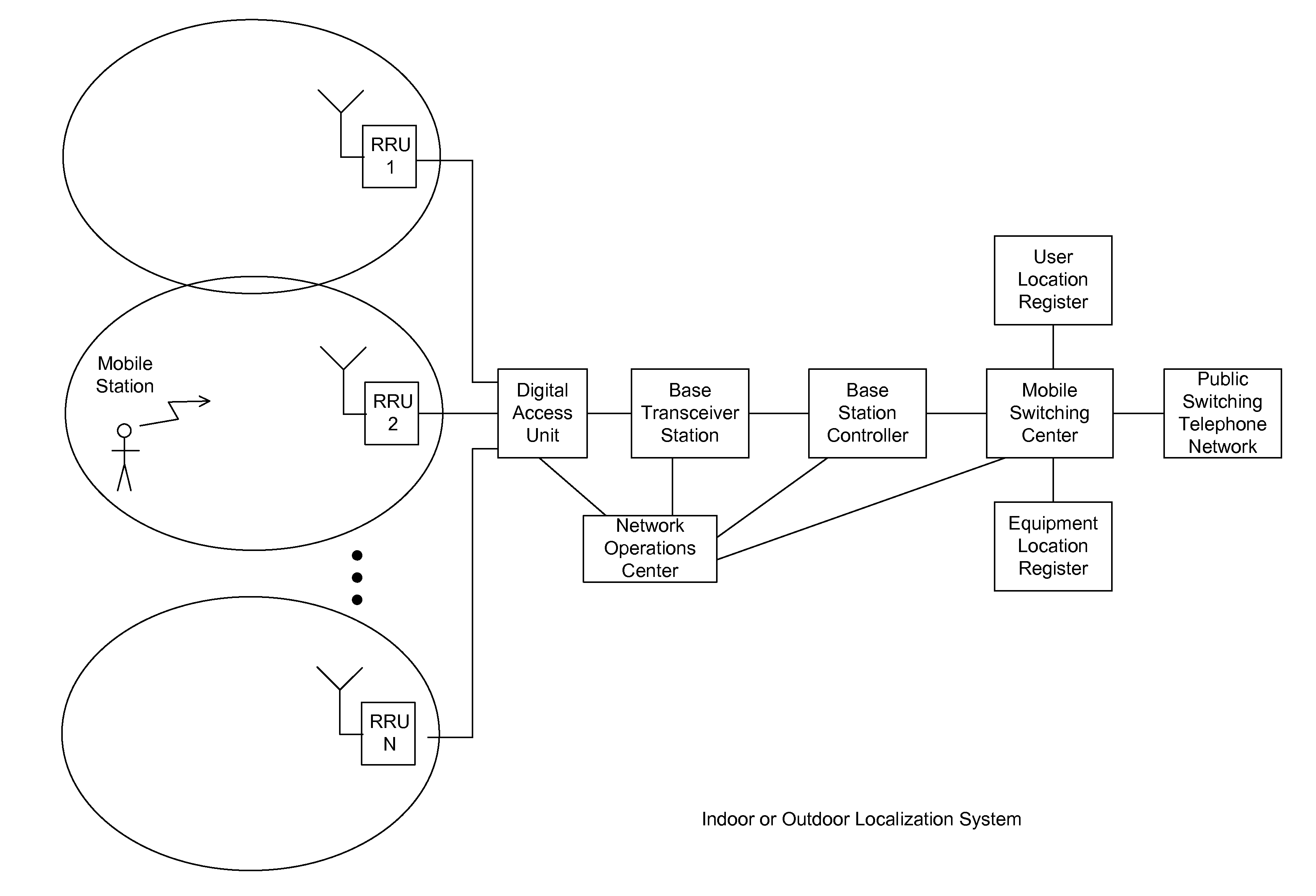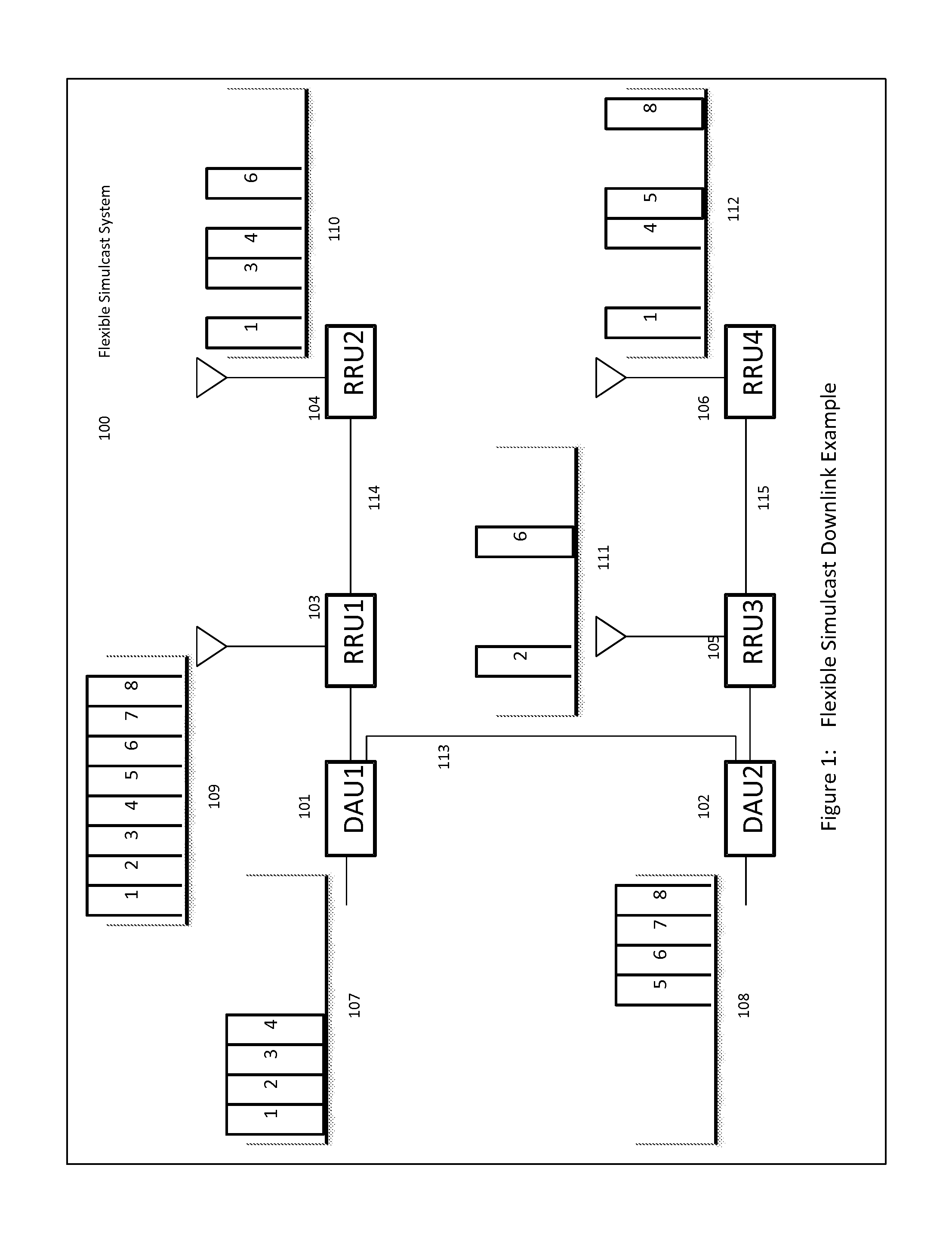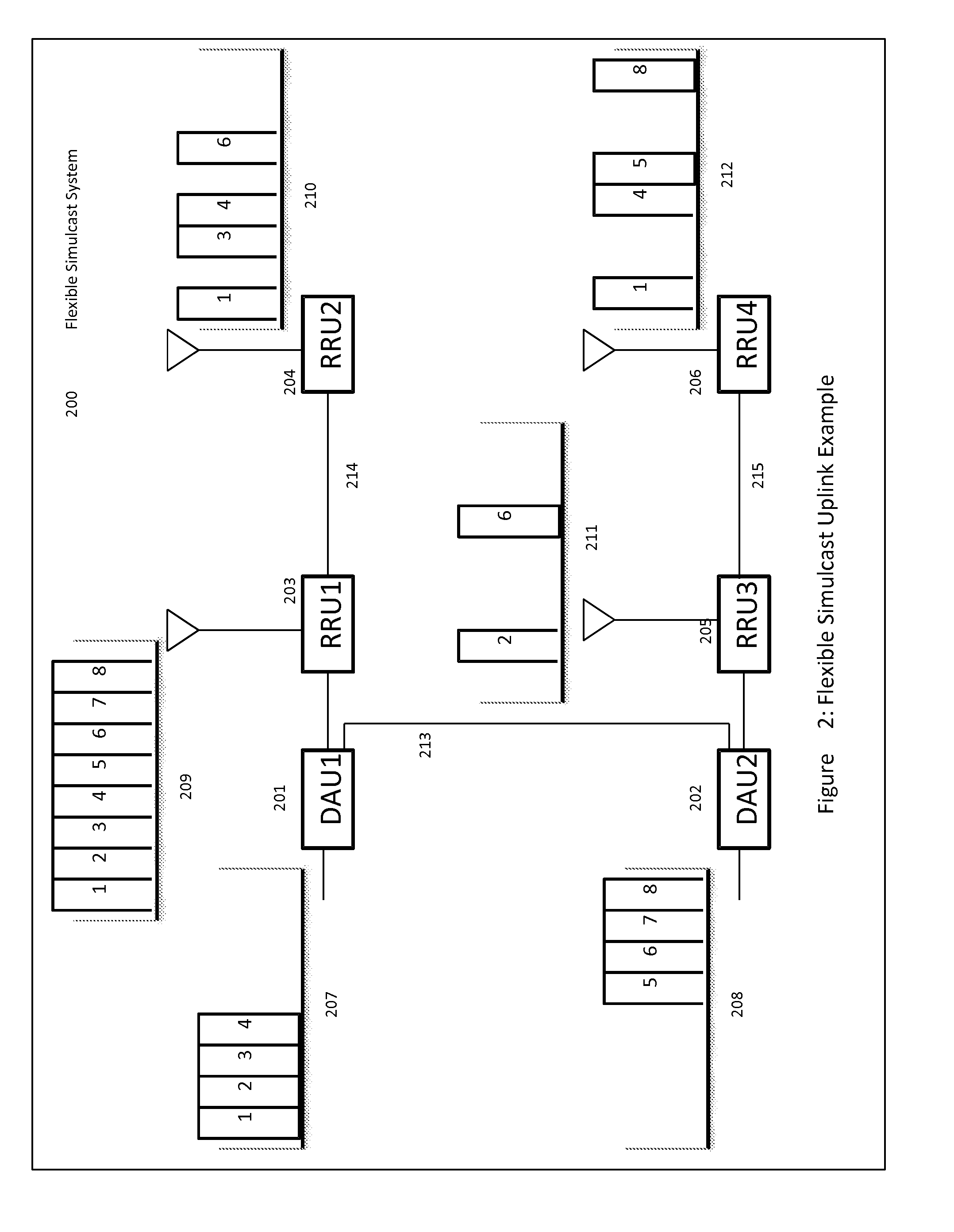[0016]The present invention substantially overcomes the limitations of the prior art discussed above. The advanced
system architecture of the present invention provides a high degree of flexibility to manage, control, enhance and facilitate
radio resource efficiency, usage and overall performance of the distributed
wireless network. This advanced
system architecture enables specialized applications and enhancements including flexible simulcast, automatic
traffic load-balancing, network and
radio resource optimization, network calibration, autonomous / assisted commissioning, carrier
pooling, automatic
frequency selection,
radio frequency carrier placement, traffic monitoring, traffic tagging, and indoor
location determination using
pilot beacons. The present invention can also serve multiple operators, multi-mode radios (modulation-independent) and multi-frequency bands per operator to increase the efficiency and
traffic capacity of the operators' wireless networks.
[0017]Accordingly, it is an object of the present invention to provide a capability for Flexible Simulcast. With Flexible Simulcast, the amount of radio resources (such as RF carriers, CDMA codes or TDMA time slots) assigned to a particular RRU or group of RRUs by each RRU Access Module can be set via
software control as described hereinafter to meet desired capacity and
throughput objectives or wireless subscriber needs. To achieve these and other objects, an aspect of the present invention employs
software-programmable frequency selective Digital Up-
Converters (DUCs) and Digital Down-
Converters (DDCs). A software-defined
Remote Radio Head architecture is used for cost-effective optimization of the radio performance. Frequency selective DDCs and DUCs at the
Remote Radio Head enable a high
signal to
noise ratio (SNR) which maximize the
throughput data rate. An embodiment shown in FIG. 1 depicts a basic structure and provides an example of a Flexible Simulcast downlink transport
scenario. FIG. 2 depicts an embodiment of a basic structure of a Flexible Simulcast uplink transport
scenario.
[0018]It is a further object of the present invention to facilitate conversion and transport of several discrete relatively narrow RF bandwidths. In another aspect of the invention, an embodiment converts only that plurality of specific, relatively narrow bandwidths that carry useful information. Thus, this aspect of the present invention allows more efficient use of the available
optical fiber transport bandwidth for neutral host applications, and facilitates transport of more operators' band segments over the
optical fiber. To achieve the above result, the present invention utilizes frequency-selective filtering at the
Remote Radio Head which enhances the system performance. In some embodiments of this aspect of the invention,
noise reduction via frequency-selective filtering at the Remote Radio Head is utilized for maximizing the SNR and consequently maximizing the data throughput. It is a further object of the present invention to provide CDMA and WCDMA indoor location accuracy enhancement. In an aspect of the present invention, an embodiment provides enhanced location accuracy performance by employing
pilot beacons. FIG. 3 depicts a typical indoor system employing multiple Remote Radio Head Units (RRUs) and a central Digital Access Unit (DAU). The Remote Radio Heads have a unique
beacon that is distinct and identifies that particular indoor
cell. The mobile user will use the
beacon information to assist in the localization to a particular
cell.
[0019]It is a further object of the present invention to enhance
GSM and LTE indoor location accuracy. In another aspect, an embodiment of the present invention provides localization of a user based on the radio signature of the
mobile device. FIG. 4 depicts a typical indoor system employing multiple Remote Radio Head Units (RRUs) and a central Digital Access Unit (DAU). In accordance with the invention, each Remote Radio Head provides unique header information on data received by that Remote Radio Head. The system of the invention uses this header information in conjunction with the mobile user's radio signature to localize the user to a particular
cell. It is a further object of the present invention to re-
route local traffic to Internet VoIP, Wi-Fi or
WiMAX. In this aspect of the invention, an embodiment determines the radio signatures of the individual users within a DAU or Island of DAUs and uses this information to identify if the users are located within the coverage area associated with a specific DAU or Island of DAUs. The DAUs track the radio signatures of all the active users within its network and
record a running data base containing information pertaining to them. One embodiment of the present invention is for the
Network Operations Center (NOC) to inform the DAU that, e.g., two specific users are collocated within the same DAU or Island of DAUs, as depicted in FIG. 6. The DAUs then reroute the users to Internet VoIP, Wi-Fi or
WiMAX as appropriate. Another embodiment of the present invention is to determine
the Internet Protocol (IP) addresses of the individual users' Wi-Fi connections. If the individual users' IP addresses are within the same DAU or Island of DAUs, the
data call for these users is rerouted over the internal network.
 Login to View More
Login to View More  Login to View More
Login to View More 


